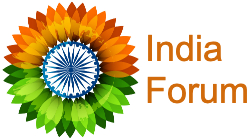vijaya dashami shubhakanksha to all, and may devi bless everyone with peace and strength of all types.
This Nava ratri, I was blessed with the opportunity to visit these three important places:
- sri pATeswarI devI sakti pITha at pATan overseeing nepal, the deity of ex-royal family
- 12/13th century sri-har-mandir of mAlIpur in central bihar, a unique - sri rAma-siva temple, like at rAmeswaram - but, less known and visited
- srAvasti-jetavana anandabodhi-mahavihara in balarampur UP, where bhagawan buddha is said to have spent 24 chatur-masa-s of his life.
Visiting the native place after a few years, I was delighted to notice that "navaratri-smell" is still intact - that potent smell which would invite and invoke sacredness in any heart - that smell coming from ghee, karpur, mango-wood samidha, agar, and other havan sAmagrI buring in the yagya-vedikA during the sacred days - the smell kind of settles into everything, and remains wherever you go. Men and women - young and old, everyone - kind of drunk of happiness, devI blessing everyone. children, all, in a different joy, playfully enjoying the navaratri.
Celebrating navarAtri has also been transformed in many ways. Here in Bihar, east UP and even Nepal, it used to be largely a private affair (except rama-lila), quite unlike how it is in Bangal/Gujarat tradition of navaratri "celebration". But now, one can notice large panDAl-s in every colony and every crossroad, artistic mUrtIs of many types (imported from Bengal), various social activities accompanying the celebration, music etc, and in all a lot of public interest and so on.
This is a new trend for this region - emerging in the last 5 years. People here have suddenly taken to durgA pujA "celebrations" like duck to water. I can not describe enough.
- Every locality has a durgA-pujA celebration committee and paNDAl of its own managed by teenagers/youth.
- "Jai Bhawani", just like "Jai Sri Ram" of earlier, could be heard as kind of a new greeting, blessing, slogan, or a war-cry. ("war cry" - because of the enthusiasm it is shouted with, sometimes followed by 'Har Har Mahadev' or at places even with 'Jai Shivaji')
- The puplic celebrations are particularly popular in SC/OBC communities, majority led by these groups anyways. Still the committees cut across jAti and political affiliations.
- In muslim-dominated/populated areas, this is even more popular amongst the Hindus.
- Emergence of durga pUjA popularity in this region has kind of diverted the traditional interest in ramalIlA - another event that takes place these days. vijayA dashami - the day which is otherwise seen as the day of burning rAvaNa-kumbhakarNa-indrajIta, received less attendance and interest than before, as people were tired after the pratimA visarjana process.
- "pUjA" has still not acquired the commercial angle - like in Gujarat/Mumbai/Bengal, although the shopkeepers seemed doing a much better business than ever.
vijaya dashami greetings to all, once again. may bhagwan sri rama bless all.
This Nava ratri, I was blessed with the opportunity to visit these three important places:
- sri pATeswarI devI sakti pITha at pATan overseeing nepal, the deity of ex-royal family
- 12/13th century sri-har-mandir of mAlIpur in central bihar, a unique - sri rAma-siva temple, like at rAmeswaram - but, less known and visited
- srAvasti-jetavana anandabodhi-mahavihara in balarampur UP, where bhagawan buddha is said to have spent 24 chatur-masa-s of his life.
Visiting the native place after a few years, I was delighted to notice that "navaratri-smell" is still intact - that potent smell which would invite and invoke sacredness in any heart - that smell coming from ghee, karpur, mango-wood samidha, agar, and other havan sAmagrI buring in the yagya-vedikA during the sacred days - the smell kind of settles into everything, and remains wherever you go. Men and women - young and old, everyone - kind of drunk of happiness, devI blessing everyone. children, all, in a different joy, playfully enjoying the navaratri.
Celebrating navarAtri has also been transformed in many ways. Here in Bihar, east UP and even Nepal, it used to be largely a private affair (except rama-lila), quite unlike how it is in Bangal/Gujarat tradition of navaratri "celebration". But now, one can notice large panDAl-s in every colony and every crossroad, artistic mUrtIs of many types (imported from Bengal), various social activities accompanying the celebration, music etc, and in all a lot of public interest and so on.
This is a new trend for this region - emerging in the last 5 years. People here have suddenly taken to durgA pujA "celebrations" like duck to water. I can not describe enough.
- Every locality has a durgA-pujA celebration committee and paNDAl of its own managed by teenagers/youth.
- "Jai Bhawani", just like "Jai Sri Ram" of earlier, could be heard as kind of a new greeting, blessing, slogan, or a war-cry. ("war cry" - because of the enthusiasm it is shouted with, sometimes followed by 'Har Har Mahadev' or at places even with 'Jai Shivaji')
- The puplic celebrations are particularly popular in SC/OBC communities, majority led by these groups anyways. Still the committees cut across jAti and political affiliations.
- In muslim-dominated/populated areas, this is even more popular amongst the Hindus.
- Emergence of durga pUjA popularity in this region has kind of diverted the traditional interest in ramalIlA - another event that takes place these days. vijayA dashami - the day which is otherwise seen as the day of burning rAvaNa-kumbhakarNa-indrajIta, received less attendance and interest than before, as people were tired after the pratimA visarjana process.
- "pUjA" has still not acquired the commercial angle - like in Gujarat/Mumbai/Bengal, although the shopkeepers seemed doing a much better business than ever.
vijaya dashami greetings to all, once again. may bhagwan sri rama bless all.
